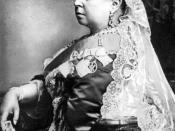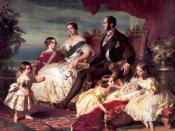Introduction
Everyday, thousands of visitors go to places like London and arrive at Victoria Rail Station. During their stay, they may visit the Victoria and Albert Museum or go to a concert at the Royal Albert Hall. Even here in Horsforth I have seen numerous streets named Victoria or Albert. I am sure many people living in Britain have objects that date from her reign in the 19th century. Many people live in Victorian homes, use mailboxes, or railway stations that would have been attributed to 19th century history. All over there are hundreds of reminders of the reign of Queen Victoria and her husband Prince Albert.
During her sixty-four years as queen over Britain and its Empire (1937-1901) so much changed in the way people lived. In a short essay like this, it would be easy to give an impression-and a perfectly fair one- that 19th century Britain was wealthy and progressive.
The health and living conditions, homes and transport all became better. This time showed an improvement in the standard of living for many people, a greater number of people were living longer, and more comfortable lives than ever before. But, it would also be as easy to point out a world of poverty, ill health, bad housing, and hard labor for others.
Population
One of the most remarkable features of the Victorian age was the rapid growth in population. "When the Queen came to the throne most British people lived in the countryside. By the time she dies in 1901, more than three quarters of them lived in large towns and cities." (Chrisp, 1999) The steady increase in Britain's population was the most visible sign of economic growth. "In 1830 there were 16,000,000 people living in Great Britain. At the end of Victoria's reign this number...


